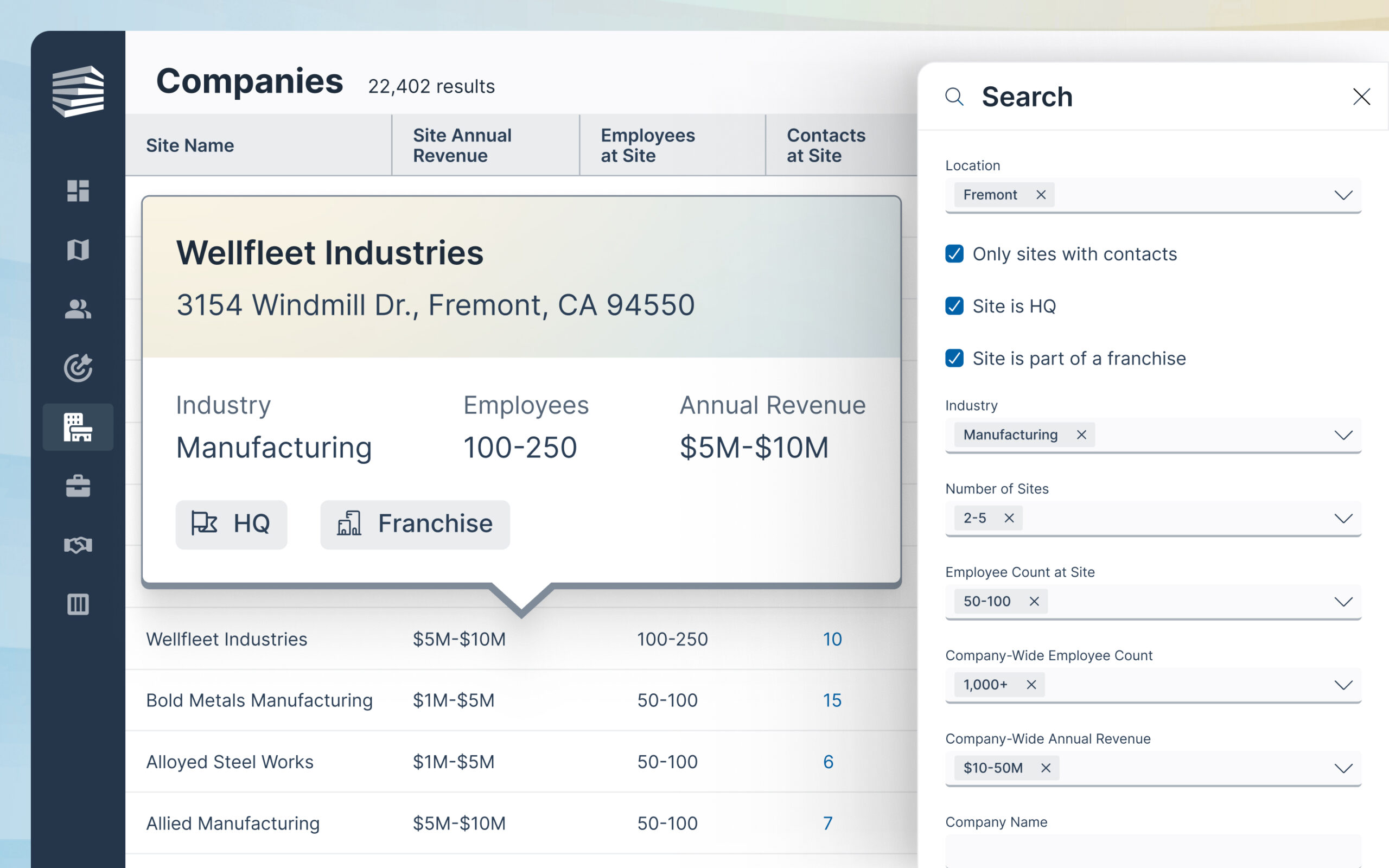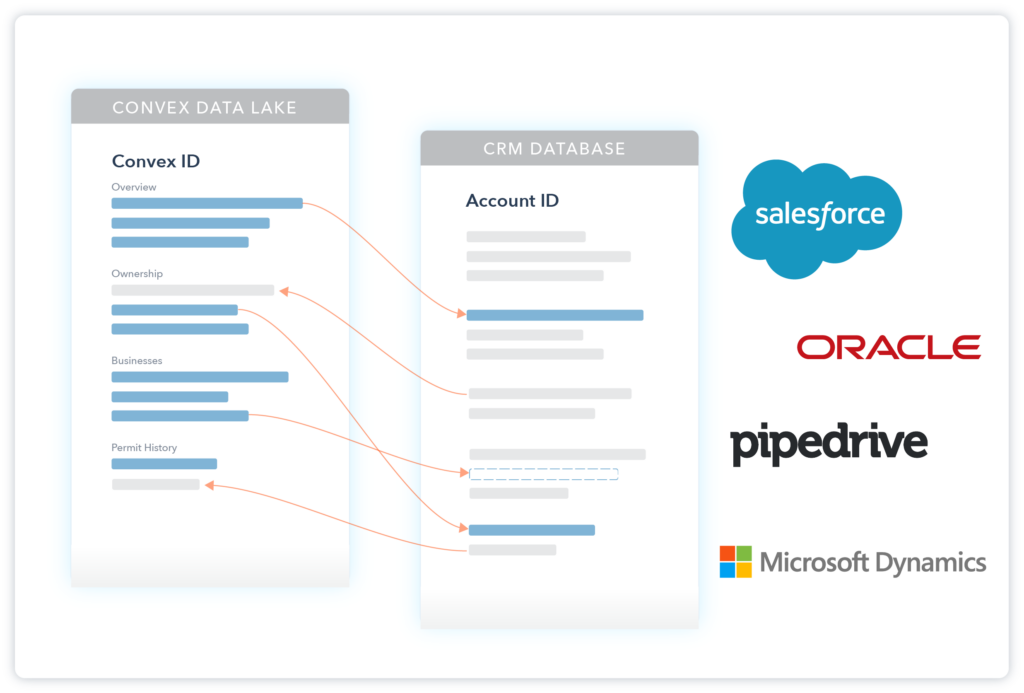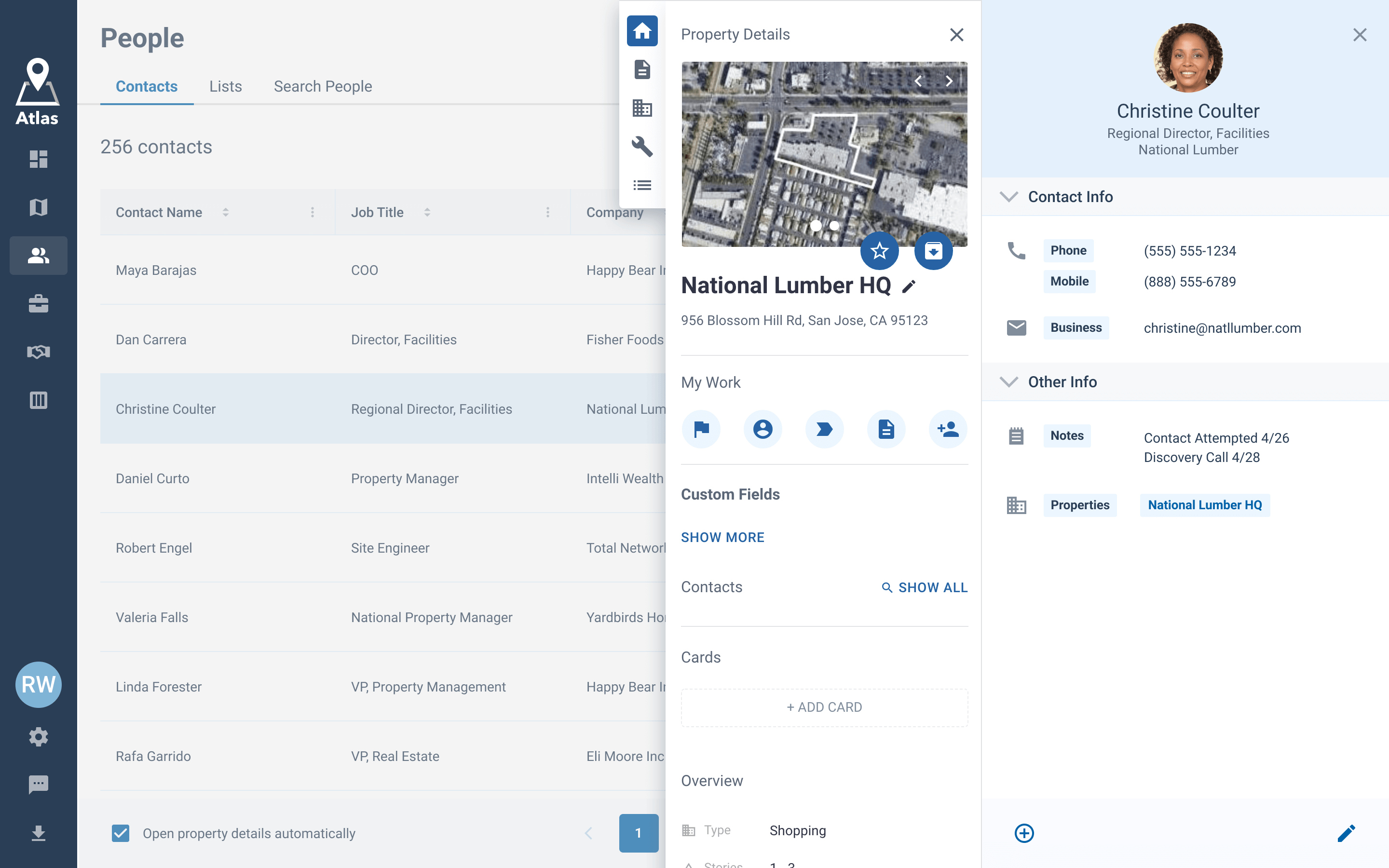Introduction
Mid-market commercial services businesses operate in a challenging space—large enough to require sophisticated sales and marketing strategies but small enough to be in competition with not only local businesses but also enterprise giants with endless resources.
For mid-market companies, the key to growth is developing lead-generation strategies that accelerate the sales pipeline while balancing efficiency and personalization.
Whether you’re selling HVAC systems, solar panels, janitorial services, or waste management solutions, finding the right prospects and converting them into customers is the “lifeblood” of your business.
However, not all lead generation strategies were “created the same,” especially in the commercial services space.
In this article, we’re going to cover actionable strategies designed specifically to address the lead-gen needs of mid-market businesses. Whether you’re an owner, sales manager, or rep, these insights will help you find, attract, and convert high-quality leads.
Understanding Mid-Market Commercial Services Lead Generation

Success in the mid-market is about being adaptive. If you’ve made it to “mid-market” status, you’re already doing a great job in many areas, but growing beyond $10 million in revenue to $100 million, $250 million, or even $500 million requires a new way of thinking. Hard work alone won’t get you there. Instead, you need to:
Hire the right people who can take your business to the next level.
Use smart systems to streamline your operations.
Build a strong company culture that supports growth.
Find the right tools to help you outsmart competitors.
To grow to the next level, you’ll need to be able to recognize changing trends, build a brand, and understand exactly who your target customer is.
Research here is key.
Learning about your potential customers—most often property owners, managers, facilities directors, or lead engineers—allows you to develop a comprehensive understanding of their business, their needs, and their pain points. This information will form the foundation of your lead generation strategy.
Effective lead generation involves a series of steps—most often prospecting, conversion, and lead nurturing through the sales cycle. The challenge with traditional lead generation methods is that they rely on guesswork and “shots in the dark” rather than a data-driven approach.

Traditional lead generation pushes sales teams into the field to find sales opportunities. Canvassing (“driving for dollars”), cold calls and emails, drop-ins, business cards and leave-behind materials (promo products), and attending trade shows are all familiar strategies—and they can be effective, but they require a ton of legwork and time.
Once an opportunity has been identified, your salespeople then attempt to find contacts for each of these opportunities on LinkedIn and other databases of professionals so they can send a message that (they hope) will resonate with the potential customer—which, according to Cognism, SmartLead, and other sales intelligence tracking solutions, has a 2% – 4.8% likelihood of success.
This means that if your salespeople need to close $1,000,000 per year (let’s assume a 3% conversion rate and a 50% close rate), they’d need to reach 30,000 people per year (2,500 per month/ 625 per week). As you can imagine, this is a heavy lift for even the best salespeople, with supporting business development staff.
Luckily, with today’s intelligence tools, you don’t have to rely on guesswork or costly, time-intensive methods like this.
Top Strategies for Mid-Market Commercial Services Lead Generation

Sales Intelligence Software and Property Intelligence Tools
Sales intelligence software is designed to help businesses uncover opportunities, connect with the right people, and engage with commercial accounts more effectively. These tools collect and analyze data from a variety of sources—like social media, company websites, and public databases—to give you a clear picture of your potential leads’ needs and priorities.
Property intelligence tools take this even further by focusing on detailed information about specific properties, including ownership and management contacts. This allows you to fine-tune your lead generation strategy, targeting properties that are most likely to benefit from your services and identifying the key decision-makers who can move deals forward. With this level of insight, your team can work smarter, reach the right people faster, and close more deals.
There’s one platform that combines both sales and property intelligence with additional insight—intent data. Intent data is a powerful tool for mid-market commercial services companies, as it identifies accounts that are actively searching for a solution like yours—these are called buying signals.
By combining these three powerful tools, Convex is a game changer for lead generation. Instead of the old methods that are time-consuming and costly, Convex’s lead-gen model begins with buying signals and targets property owners, managers, and facilities directors who are actively searching for your offerings. This approach virtually eliminates the heavy lift required to build the sales pipeline and focuses your sales team’s attention on “warm selling” opportunities with a high likelihood of converting into a sale.
Identifying Your Target Audience in the Mid-Market Segment

Whether you choose to use Convex or not (which I would highly recommend, but I’m obviously a bit biased), pinpointing the right audience is the first factor for effective lead generation at the mid-market level. Here, understanding your potential clients is key. Each segment has its own set of pain points, priorities, and needs.
For example, property owners are often focused on ROI and protecting the value of their investments, property managers have to keep their tenants and occupants happy, and facilities directors may be more concerned with efficiency and cost savings. Understanding the nuances of each target avatar will allow you to create targeted messaging that resonates with your potential customers.
Start by defining buyer personas (or building an ideal customer profile (ICP). These are detailed profiles of your ideal clients. Include factors like:
Building or Industry-type
Company of Property size
Decision-maker roles
Owner or Tenant Occupancy
Unique challenges that they’re facing
How you overcome those challenges in a way that’s beneficial to them (this will come into play in the next section)
Knowing these elements guides your outreach strategies. It helps tailor your marketing messages to resonate with each persona.
If you’re stuck on an aspect of your avatar, model them off your best existing clients or the profiles you want to pursue.
Talking to existing customers to gather feedback can also be a helpful step. They provide valuable information about what works and what doesn’t. Their experiences can shape your understanding of the target audience, informing future strategies.
Customizing Your Value Proposition for Mid-Market Needs

Next, craft a unique value proposition (USP) that stands out against competitors in your sector. Understanding your prospects’ challenges allows you to provide relevant solutions and find those “blue oceans” where potential customers see you as their only option.
Begin by evaluating the pain points faced by your avatars and how you uniquely solve these challenges in different (better) ways than competitors. These challenges often include limited resources or increased operational efficiency. Offer solutions that specifically address these issues.
Pro Tip: If you’re in an industry where you can name your USP, you have something to offer that none of your competitors can touch!
Your value proposition should highlight unique benefits. Focus on how your services can improve efficiency or drive growth. Make it clear why choosing your solution is the best decision.
Personalization is key when communicating your value proposition. Use language and examples that resonate with your audience’s specific market niche. Tailored messaging helps demonstrate that you understand and cater to their unique needs.
Leveraging the Right Lead Generation Tools

To succeed in mid-market lead generation, you need the right tools. Tools like Convex transform lengthy 2-3 hour prospecting, lead generation, and outreach tasks (according to Salesforce) into an efficient 3-5 minute process per account.
Start by exploring available technology that suits your needs. Many tools exist that can help manage and automate lead generation activities so your team can focus on the highest value activities for their role—sales.
Consider the following tools to boost your strategies:
Sales Intelligence and Property Intelligence Tools Designed for Commercial Services.
CRM Systems: Great for managing customer relationships and tracking interactions.
Marketing Automation Software: Helps automate repetitive marketing tasks and nurture leads.
Analytics Platforms: Essential for measuring success and gaining insights into your efforts.
Choosing the right combination of tools ensures that your strategy and sales operations workflow go hand-in-hand and have the highest impact on revenue possible. Also, consider tools based on their ability to integrate with existing systems that your team currently loves using.
Keep in mind that technology is only part of the equation. Training your team to utilize these tools effectively is equally important. Encourage a culture of continuous learning and adaptation.
CRM and Marketing Automation

CRM systems like Salesforce, Hubspot, and Zoho are pivotal for building strong customer relationships, and that’s why we built Convex to integrate directly into them. These tools can help you accelerate the sales pipeline, organize contacts, track interactions, store contracts, install base mapping data, and identify opportunities for long-term service and maintenance agreements.
Marketing automation streamlines repetitive tasks, saving time and effort. It allows teams to focus on creating meaningful connections with prospects.
Together, intelligence tools, pipeline managers, CRM solutions, and marketing automation enable personalized communication and the ability to effectively nurture leads. This synergy is necessary for creating an effective sales motion that converts prospects into loyal customers.
Property Owner Lead Lists

One of the ways you can accelerate sales is by buying databases and lead lists. This is often costly, and since many of these leads have been contacted many times, they’re less likely to convert—that said, they can be a valuable asset to companies looking to grow quickly.
When kept up-to-date, these lists can provide direct access to key decision-makers in the commercial real estate market.
Utilizing these lists can save your team time and resources, resulting in more qualified leads and sales opportunities. If you have an additional marketing budget, it can also be a great way to test messaging and help you narrow down your target audience.
Social Media Platforms and SEO

Social media platforms offer vast resources for reaching new audiences. Whether you’re using platforms like LinkedIn, Facebook, Instagram, or even Snapchat and TikTok to post ads, share relevant content, engaging stories and testimonials, or just capture attention and drive interactions, these tools can inform your buying signals and create a warmer selling experience for your sales team.
You have to keep in mind that people browse social for entertainment, so your goal is not really to sell on these platforms as much as it is to create engagement. Engagement means that your brand comes up in conversations and that people think of you when they need a solution. This is exactly where SEO, “backlinking” to high domain authority (DA) social channels, keyword optimization, and hashtags come into play.
Pro Tip: Use analytics to track which platforms work best for your target audience and adjust your strategy to focus on them.
SEO is also critical for visibility in search engines like Google and Bing. Optimizing your online profiles and your website and creating quality backlinks all contribute to improving your ranking. This, in turn, makes it easier for potential customers to find you when searching for solutions.
Combining social media with SEO creates a powerful digital presence. It attracts organic leads and supports various marketing campaigns.
Content Marketing: Establishing Thought Leadership

On the topic of social and SEO, content marketing is a cornerstone of effective lead generation. But this one takes a bit more effort. As companies grow, we’re seeing leadership play a pivotal role in driving sales. This originated with people like Richard Branson, who pulled ridiculous marketing stunts to gain attention (you can review some of his “best hits” here.) and has more recently been popularized by people like Gary Vaynerchuk, Codie Sanchez, and many others.
Brands are finding that a parallel approach works wonders in driving attention to their company. Not only does this drive attention to your company culture and results, but it also positions your company as an authority in the mid-market commercial services industry.
Creating valuable content begins with understanding your audience’s pain points. Tailor your blogs, whitepapers, and case studies to address these issues comprehensively.
High-quality content attracts potential leads by offering solutions—when your audience perceives that you understand their problems and can solve them in the best way possible, you become the expert, and other competitors are left competing for the scraps you leave behind.
Diversify your content formats to reach different audience segments. Consider short videos, posts, webinars, podcasts, and infographics to engage prospects who prefer various media types.
Thought leadership isn’t just about sharing information. It involves initiating conversations and sparking discussions on relevant industry trends. Engage with your audience through comments and social media interactions. This two-way communication fosters community and loyalty, which is essential for nurturing long-term relationships.
Finally, ensure that your content is easily accessible. Utilize clear calls to action to guide readers toward taking the next step in the sales funnel.
Multi-Channel Lead Generation Approach

Global business structure of networking. Analysis and data exchange customer connection, HR recruitment and global outsourcing, Customer service, Teamwork, Strategy, Technology and social network
A multi-channel approach is essential for reaching prospects in mid-market commercial services. It allows businesses to diversify their outreach efforts, maximizing “touchpoints” with potential leads.
Utilizing various channels increases the chances of capturing interest. Think of it as casting a wide net, then narrowing it down to quality prospects through targeted lead generation.
Channels such as social media, email, and content marketing each have unique strengths. Incorporating several methods ensures that you’re reaching different audience segments effectively.
Consistency across channels helps maintain brand voice and messaging. This unified approach strengthens recognition and trust, which is essential for converting leads into clients.
Email Marketing and Personalization

Email marketing remains a powerful tool for targeted lead generation. It’s a direct line to your prospects’ inboxes, offering personalized communication.
Customization enhances your email marketing strategy. Tailor messages to address specific needs, increasing engagement and response rates among mid-market audiences.
Segment your email lists according to preferences and behaviors. This allows for more focused campaigns, resulting in higher conversion opportunities and stronger client relationships.
Paid Advertising and Retargeting

Paid advertising offers quick visibility. Platforms like Google Ads and LinkedIn provide options for reaching specific demographics in the mid-market sector.
Craft compelling ads with clear calls to action. Ensure the value proposition is strong and immediately apparent to capture attention.
Retargeting is an effective way to re-engage users who showed initial interest. Utilize data to customize ads, reminding these prospects of the value your services provide.
Measuring and Analyzing Lead Generation Success

Effective lead generation requires robust measurement and analysis. Tracking results helps refine strategies, ensuring continuous improvement.
To start, define key performance indicators (KPIs) that align with your goals. Common KPIs include conversion rates, lead quality, and campaign ROI.
Data is crucial in assessing the effectiveness of lead-generation tools. Analyze metrics regularly to identify trends and areas needing optimization.
Conversion Rates: Monitor the percentage of leads converting into clients.
Lead Quality: Evaluate how well leads align with target market needs.
ROI: Calculate returns from your investments in lead generation efforts.
Leverage analytics software to gather valuable insights. Tools like Google Analytics provide data to understand lead behavior and interactions.
Continually adjust your strategies based on these insights. This adaptive approach ensures you stay aligned with market changes and client needs.
Conclusion: Crafting a Continuous Improvement Cycle

The fastest growing businesses today are taking advantage of a flywheel approach—and while the business model may not directly relate to commercial services, the principle of building a lead generation model that scales almost automatically with each new customer is core to building a sales engine that drives deals no matter the economic climate.
Keep in mind that lead generation is not static. It’s a dynamic process that requires constant refinement to stay effective.
Regularly review your strategies and their outcomes. Identify what works best and what needs adaptation. Taking a flexible approach that’s driven by results will help you stay competitive in the mid-market commercial services space.
By continuously adjusting, you’ll optimize your lead generation strategies for better results.
And, if you’re ready to accelerate sales, Schedule a free demo of Convex today to see how one solution can have a huge impact on your bottom line.
Share





